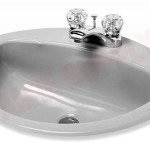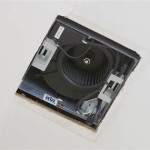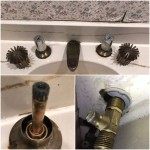How to Replace a Bathroom Faucet Shower
Replacing a bathroom faucet shower is a common DIY project that can significantly enhance the look and functionality of your bathroom. With the right tools and a little patience, you can successfully complete this task. This article provides a step-by-step guide to replacing your bathroom faucet shower, covering essential considerations, safety precautions, and detailed instructions.
Step 1: Gather Supplies and Tools
Before starting the replacement process, ensure you have all the necessary supplies and tools. This will streamline the process and minimize any potential delays.
Here's a comprehensive list of what you'll need:
- New bathroom faucet shower
- Adjustable wrench
- Channel-lock pliers
- Phillips head screwdriver
- Flathead screwdriver
- Plumber's tape (Teflon tape)
- Basin wrench (optional)
- Slip-joint pliers (optional)
- Bucket or drain pan
- Towels
- Safety glasses
- Gloves
Step 2: Turn Off the Water Supply
Safety is paramount when working with plumbing. Before disassembling any part of your faucet shower, locate the main water shut-off valve for your bathroom. This is usually found near the water heater or in the basement. Turn the valve clockwise to shut off the water supply.
To confirm the water is off, turn on the faucet closest to the shower. If water doesn't flow, proceed to the next step. If it does, check your valve again.
Step 3: Drain the Existing Showerhead
To prevent water from spilling, drain the existing showerhead. Place a bucket or drain pan underneath the showerhead. Turn the showerhead counterclockwise to loosen it. As the showerhead loosens, allow the water to drain into the container. Once the showerhead is completely removed, discard the old unit and set aside the new showerhead.
Step 4: Remove the Existing Faucet
Depending on the style and age of your faucet, you might need to remove the handle, spout, and shower arm before removing the main faucet body. The process will vary depending on your faucet's design.
For most standard faucets, the following steps will apply:
- Locate the faucet handles and remove the handle screws using a Phillips head screwdriver.
- Remove the handles. Some handles may require you to pull them straight up while others twist off.
- Unscrew any decorative caps or escutcheons that cover the faucet body.
- Identify the faucet's mounting nuts, which are usually located beneath the faucet body. These nuts hold the faucet in place.
- Use adjustable wrenches or channel-lock pliers to loosen the mounting nuts. Turn them counterclockwise.
- Once the mounting nuts are loose, carefully lift the faucet body off the wall.
Step 5: Clean the Pipe Threads
Before installing the new faucet, it's essential to clean the pipe threads to ensure a tight and leak-free connection. Remove any debris or old plumber's tape using a wire brush or toothbrush. Clean the threads thoroughly.
Step 6: Install the New Faucet
Now, it's time to install your new faucet. This process will be reversed from removing the old one.
- Wrap the threads of the shower arm and spout with plumber's tape to create a watertight seal. Wrap the tape clockwise around the threads, starting at the end and moving towards the fitting.
- Align the shower arm and spout with their corresponding holes in the wall. Attach the new faucet body to the wall, ensuring it is securely in place.
- Using adjustable wrenches or channel-lock pliers, tighten the mounting nuts on the faucet body. Make sure the nuts are tight but don't overtighten as this could damage the faucet.
- Inspect for any leaks. Tighten any loose connections if needed.
- Reinstall the handles, decorative caps, or escutcheons, as necessary.
Step 7: Install the New Showerhead
With the new faucet installed, attach the new showerhead. Wrap the showerhead threads with plumber's tape.
Align the showerhead with the shower arm and tighten it clockwise. Do not overtighten as this can damage the showerhead.
Step 8: Turn On the Water Supply
Once the new faucet and showerhead are installed, slowly turn the water supply back on. Start by opening the valve at the water heater, then slowly open the valve near the bathroom.
Inspect all connections for leaks. If you find any leaks, immediately tighten the connection.
Step 9: Test the Faucet and Shower
After turning on the water supply, test the faucet and shower to ensure they are functioning correctly. Turn the water on and off, adjust the temperature, and test the showerhead's spray patterns. If there are any malfunctions, immediately shut off the water supply and inspect for loose connections.
Replacing a bathroom faucet shower can be a rewarding project. By following these steps, you can confidently perform this task and enjoy an improved bathroom experience. Remember to prioritize safety, patience, and meticulousness throughout the entire process.

How To Fix A Leaking Bathtub Faucet Diy Family Handyman

How To Fix A Leaky Tub Shower Faucet

Diy How To Replace Shower Faucet Trim Plate And Handle Moen

Replacing Shower Tub Faucet How To Install A New

Master Bathroom Remodel Installing New Tub Shower Fixtures Houseful Of Handmade

How To Fix A Shower Diverter Mr Rooter Plumbing

How To Replace A Bathtub Spout Diy Family Handyman

Tub And Shower Faucet Trim Replacement Armchair Builder Blog Build Renovate Repair Your Own Home Save Money As An Owner

Fixing Faucets How To Replace A Difficult Tub Faucet Cartridge

Bathroom Repair How To A Push Pull Faucet
Related Posts







